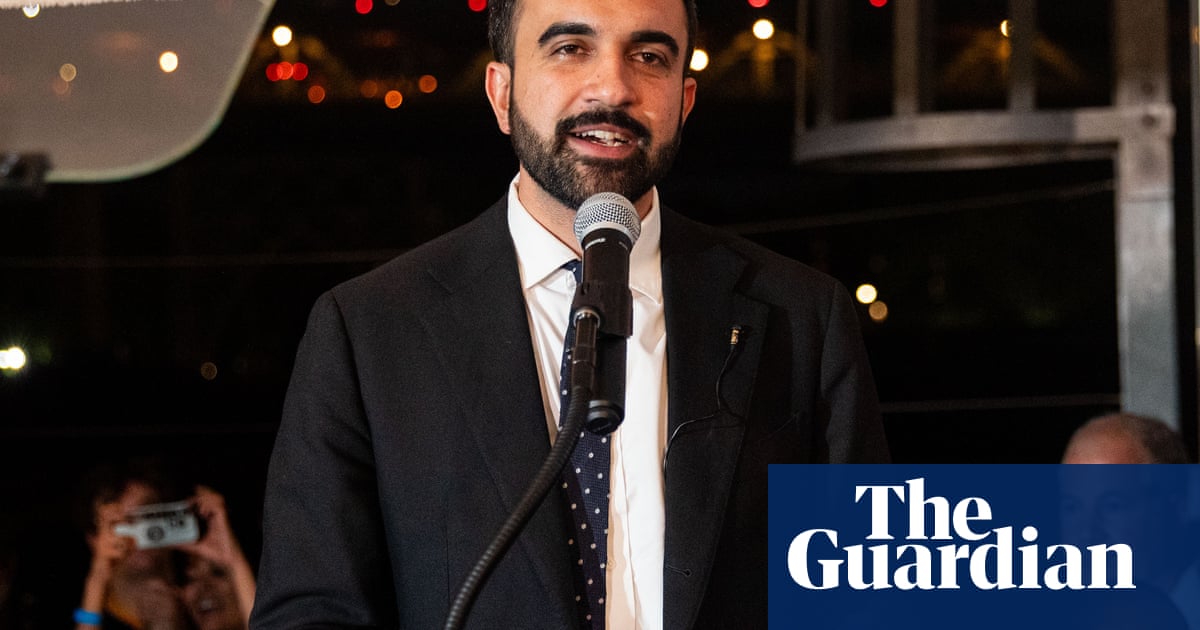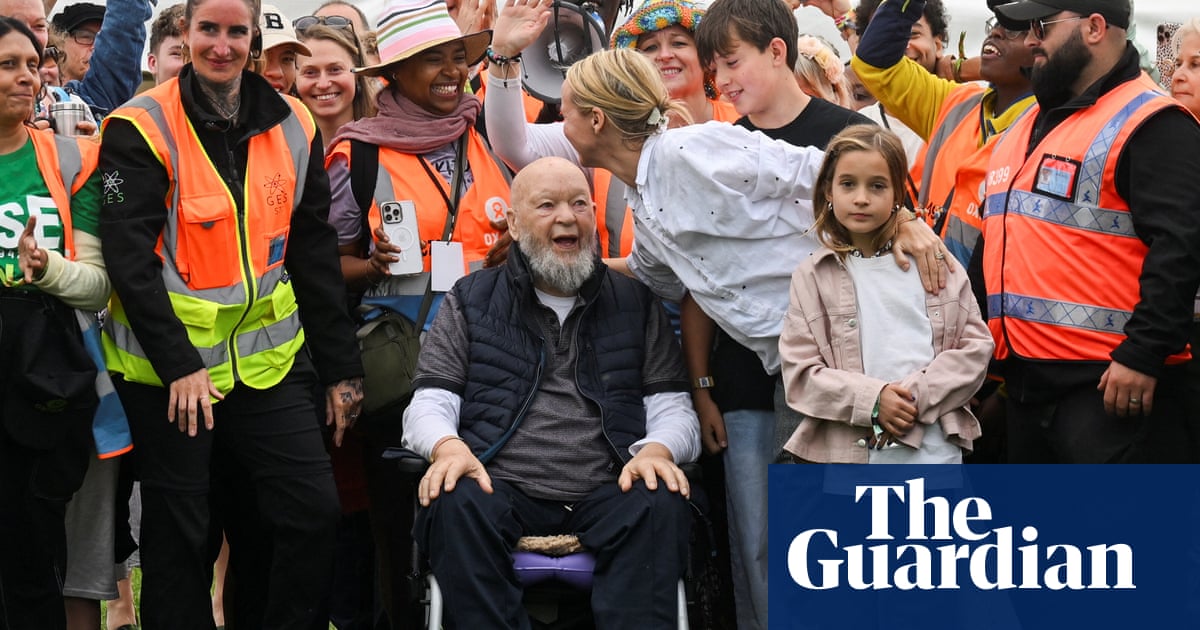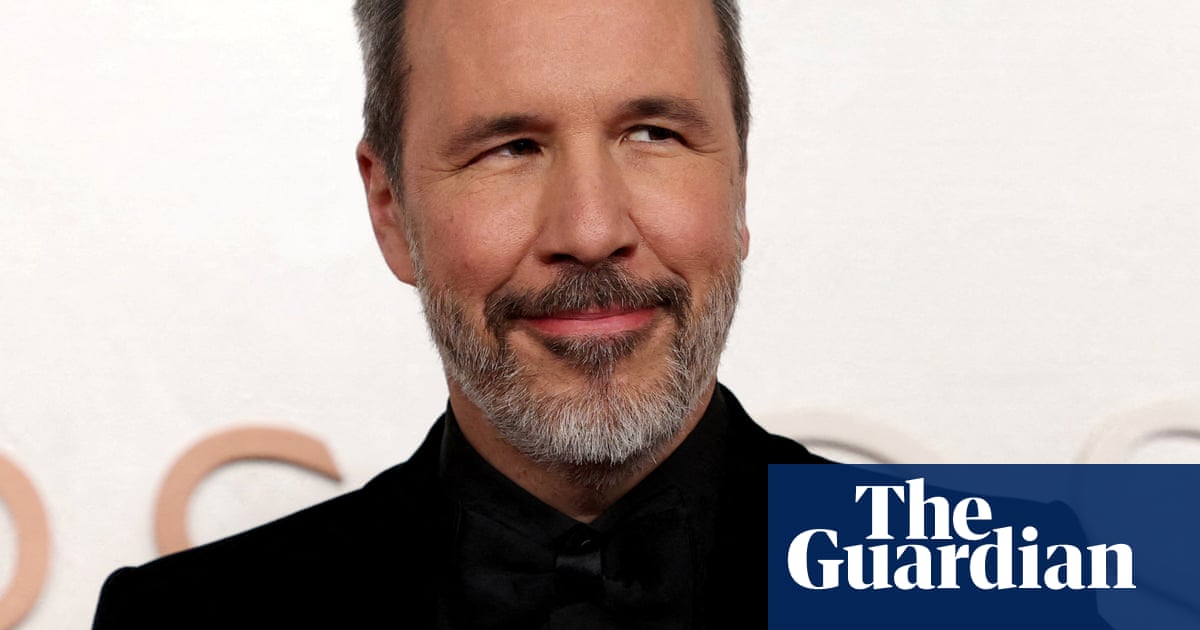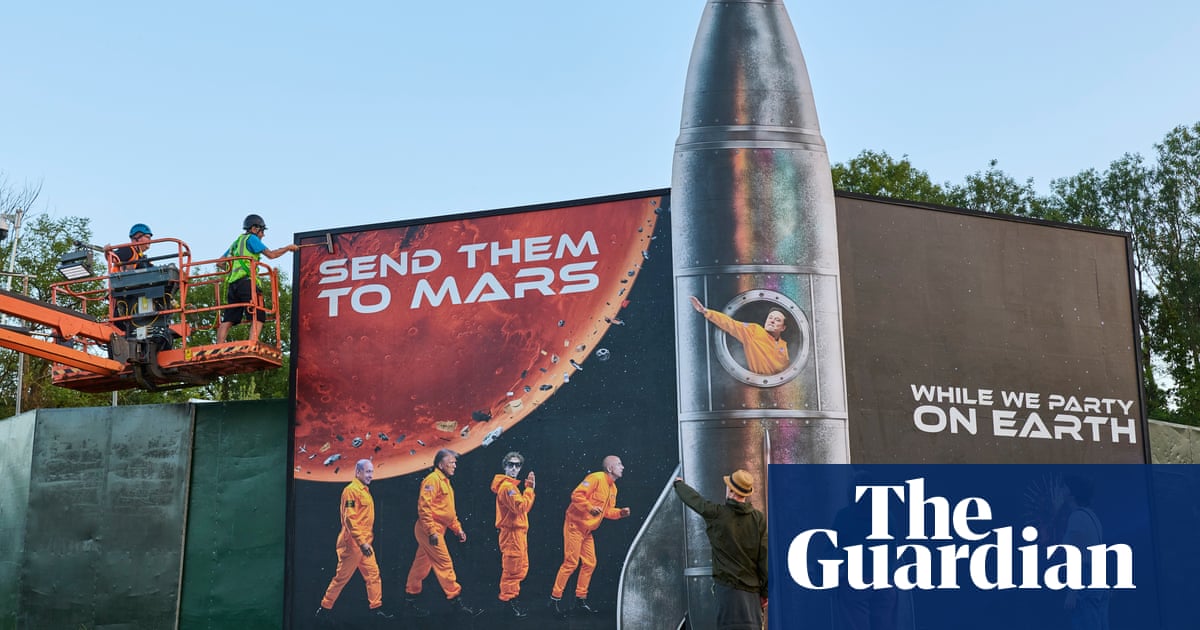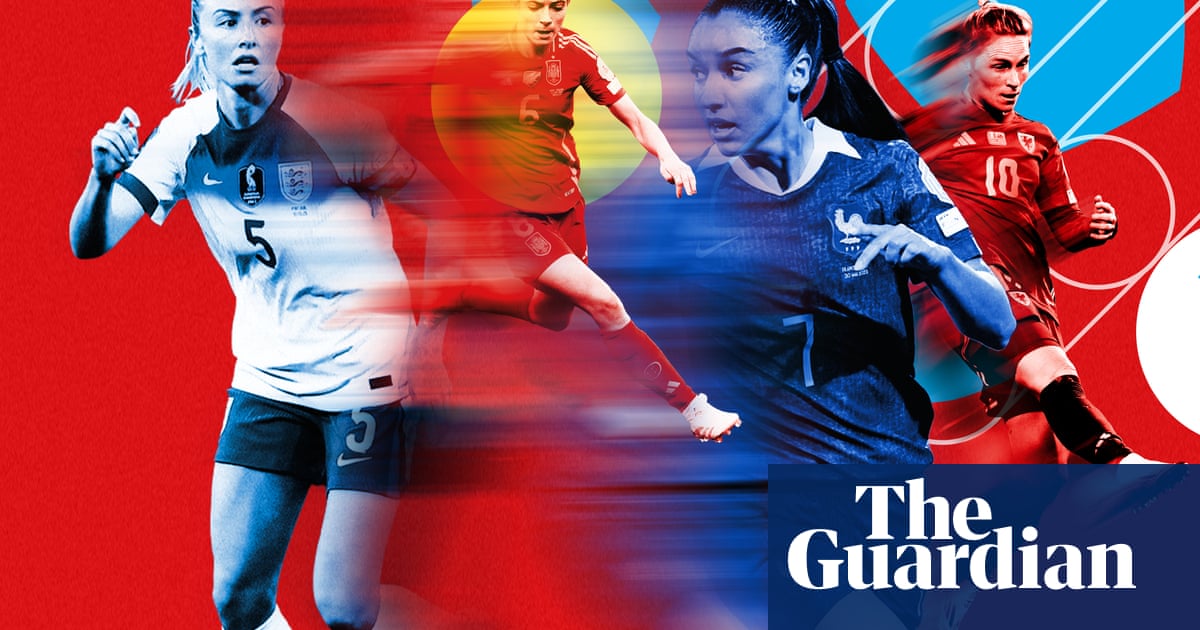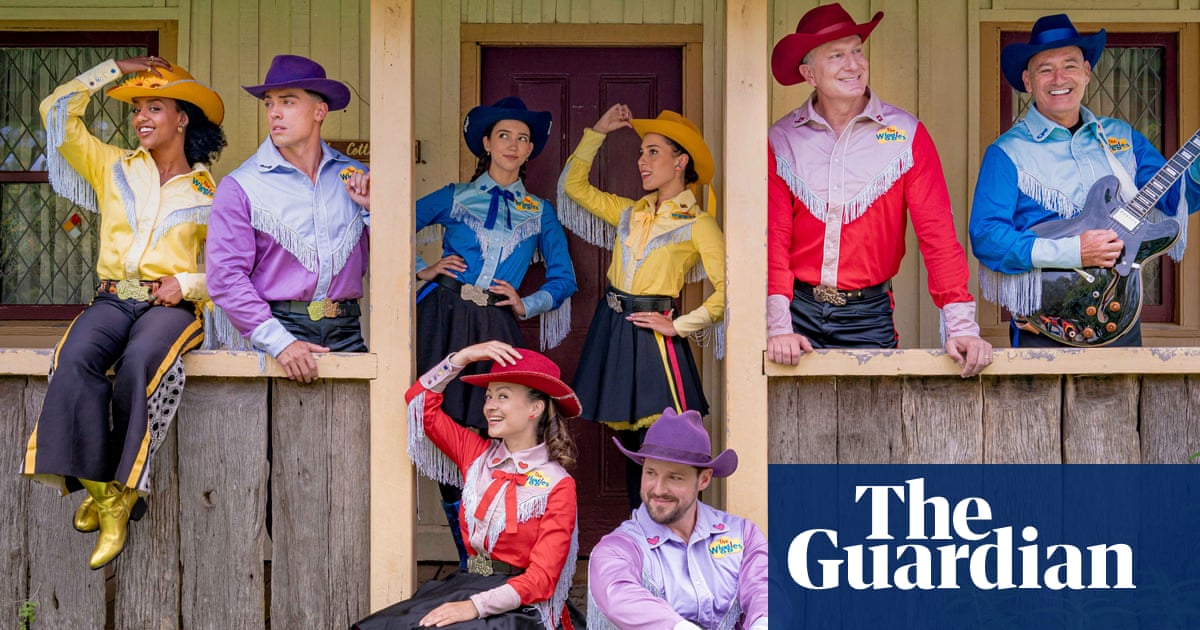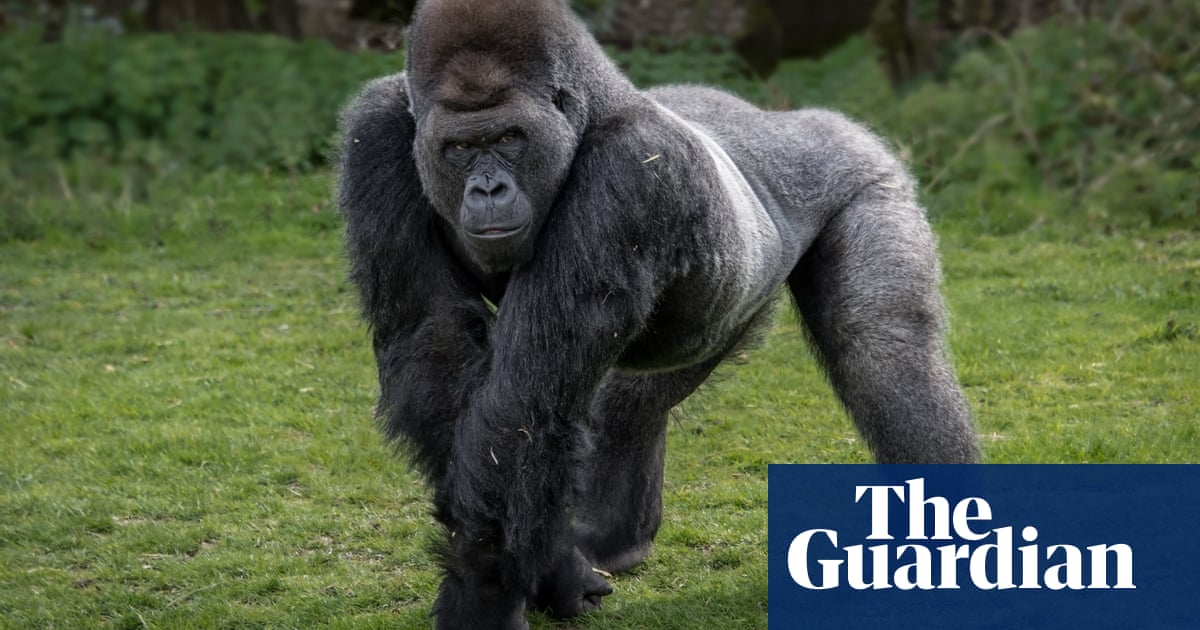Posters for the Brad Pitt Formula One race car drama advertise it, with a heavy dose of cheese, as F1 the Movie. But maybe the Spaceballs-like distinction is necessary, given the existence of F1 the Album, a soundtrack nearly as starry as the movie it accompanies. Maybe starrier: Brad Pitt, Javier Bardem, Kerry Condon and Shea Whigham probably can’t overpower the combination of Don Toliver, Doja Cat, Tate McRae, Ed Sheeran, Rosé, Dom Dolla and Chris Stapleton. This isn’t the only recent compilation to bring back the very early-to-mid-2000s moniker of “the Album”; Twisters: the Album, a 29-track country compilation, reached the Billboard top 10 in the US last summer. Rihanna, a massive pop star who hasn’t released an album in almost a decade, put out her first new song in ages on a little record called Smurfs Movie Soundtrack (Music From & Inspired By). (She plays Smurfette in the new cartoon.) Soundtracks, those mainstays of mall CD stores, are back – in streaming and vinyl form.
For decades, the idea of pop music soundtrack albums needing a comeback would have been deeply strange; they’ve been a presence more or less since the late 1960s new Hollywood inflection point of The Graduate, with its foregrounded Simon & Garfunkel hits and written-for-the-film Mrs Robinson. But by the late 2000s, soundtrack albums were perfectly engineered to go down with the music industry ship. For much of the 1990s, the industry did their best to steer music buyers away from cheap, easily attainable singles by often holding them from standalone release and forcing the purchase of a $19 CD for anyone who wanted a copy of a hit song. Soundtracks offered further scarcity, imprisoning non-album tracks that might have once served as B-sides on cheap 7in singles. Hardcore fans might be willing to fork over their money for a particularly good or rare one, getting exposure to some like-minded artists in the bargain. Popular ones could even inspire their own sequels.
That said, the bestselling soundtracks ever have tended to be driven by a single artist; Whitney Houston and the Bee Gees may not perform every song on the respective soundtracks for The Bodyguard and Saturday Night Fever, but they’re as closely identified with those records as Prince is with his Purple Rain. But there were plenty of commercially successful (and in the cases of films such as Trainspotting or Pulp Fiction, thoroughly well-curated) soundtracks that took a more varied approach. At best, they recreated the movie’s whole vibe. At worst, they felt like a mall rat swindle.
By the Wind-up Records years, when early superhero movies were often accompanied by compilations of the worst the nu-metal-influenced alt-rock world had to offer (welcome to the used bins, Daredevil: the Album), that compilation approach had lost its charm. Generations of music fans had grown accustomed to downloading, whether illegal or through Apple. While some labels did attempt the old withholding move, making certain single tracks only available with a full-album purchase, it didn’t do much good in a post-Napster world. Even as CD prices dropped, the utility of paying $12 or $15 for a bunch of leftovers with the vaguest of theming to a bad Fantastic Four movie somehow lost its appeal. In the 2010s, streaming made the whole album format obsolete for some listeners.
And for some, it still is. So how the hell did soundtrack albums, of all things, mount a comeback? Some of it has to do with the resurgence of vinyl, and the increased cachet of physical media as a collector’s object more than a practical method of consuming music. Boutique labels have released limited-edition colored vinyl of countless previously obscure movie scores, so it was only a matter of time before that proceeded to cover more mainstream-friendly pop soundtrack albums – in turn incentivizing labels and studios to get together on new versions, not just endless reissues. (No offense, Clueless Original Motion Picture Soundtrack limited edition hot pink LP.) As any touring artist can tell you, there’s a lot of money in merch, and not every movie lends itself well to collectible action figures or A24-style knick-knacks.
Labels have also found new ways to game a new system, little consolation prizes in the post-apocalyptic music landscape. It’s not just generosity of spirit that leads to F1 the Album sporting 17 tracks, or Twisters corralling a whopping 29. Albums with more songs have a chart advantage in the streaming world; it’s why Drake records routinely sprawl past the 20-track mark, and one edition of Taylor Swift’s last release crested 30. (At the same time, plenty of Disney musicals have reinstated the practice of separating songs from score; the regular edition of the Mufasa soundtrack has a whopping seven tracks, with the film’s score available either as a separate album or part of a “deluxe edition”.) A big, fat sampler of superstar collaborations can also make a movie like F1 feel like a throwback event – a studio’s way of signaling: “Look, this is a real movie, like you used to see. We mean it this time.” Some of these new-fangled soundtracks are able to conjure the actual mood of the movie in question – though if 29 different pop songs really play during Twisters, they fly past with all the impact of a fuzzy radio dial. But maybe super-sized lengths or special-edition packages can serve as easy substitute for those hard-to-recapture vibes.
And sometimes a soundtrack really is instrumental to a movie’s vibes, after all. Ryan Coogler’s recent smash hit Sinners has almost as many songs as a proper musical, and its sprawling soundtrack captures both the blues sound that backdrops its characters’ attempt to carve out a juke joint of their own in 1930s America, and the Irish folk tunes wielded menacingly by a group of vampires. The film itself has a very soundtracky sensibility; one of its centerpiece scenes uses the blues as a gateway for a time-bending trip through folk and popular music throughout the ages, transcending the film’s 1930s setting. It’s a rare case of a soundtrack that works both ways: viewers of the movie can re-immerse themselves in those gorgeous musical sequences with the album, and anyone looking for a preview of the movie’s overall time-warped feel (if not necessarily its full visceral power) can check out the songs on Spotify.
Not all soundtracks can perform that kind of magic. Will F1 the Album sell a single ticket to see Brad Pitt get his very own Top Gun: Maverick? Probably not; as far as we know, Doja Cat and Tate McRae themselves do not join the racing team. It’s entirely possible, though, that it will out-chart any number of buzzy or legacy single-artist albums – and so will that Smurfs album by virtue of boasting that exclusive Rihanna track, just like in the old days. If records can’t be fully rescued by colored vinyl and stan loyalty, well, they can sure as hell be further branded on the way down.

.png) 5 hours ago
2
5 hours ago
2



